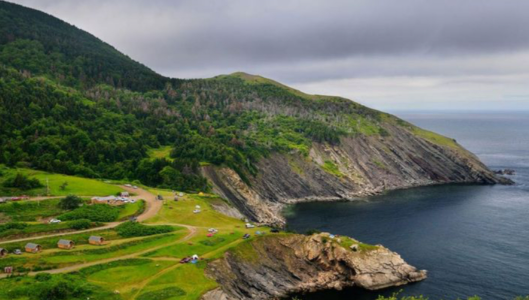Winter Trails of the Indigenous Peoples: A Journey in the Footsteps of Canada's First Nations
The trails laid down by the Indigenous peoples, Inuit and Métis, allow tourists not only to enjoy the beauty of Canada, but also to learn about the traditions, spiritual practices and way of life of its first inhabitants.
For those who want to add a little excitement to their trip, Casino No License is worth checking out, where you can try your luck in your free time.
Haida Gwaii: traces of the Haida people
The Haida Gwaii archipelago, located off the coast of British Columbia, is a place where the culture of the indigenous Haida people comes to life against the backdrop of harsh winter landscapes. In winter, the islands are covered with snow, and the Pacific Ocean adds drama to the landscape with its storms. Haanaas National Park, a UNESCO World Heritage Site, is the region's main attraction. Here you will find Sgang-Gwaa Island, where authentic totem poles erected by the Haida several centuries ago have been preserved.
In winter, tourists can go on excursions with local Haida guides, who will share legends about the creation of the world and fishing traditions. Visit the Haida Museum Centre to see exhibits dedicated to the history of these people. Winter snowshoe walks along the trails used by the Haida for hunting and gathering will allow you to feel a connection with nature. Despite the cold, locals organise cultural events, including traditional dances and storytelling around the campfire.
Wicwemikong: the heart of the Three Fires Confederacy
Manitoulin Island in the province of Ontario is home to Wicwemikong, one of the largest Indigenous communities in Canada. It is home to members of the Three Fires Confederacy: the Ojibwa, Odawa and Potawatomi. Winter in Wikweemikong is a time of festivals, the most famous of which is the Pow Wow. This indoor winter festival brings together hundreds of participants performing traditional dances in colourful costumes decorated with feathers and beads.
Tourists can join tours of the reservation to learn about the hunting and fishing traditions that are still practised by the local people. The winter trails around Manitoulin Island are ideal for snowshoeing or snowmobiling. Guides will talk about spiritual practices and purification ceremonies using sage.
Vendake: Huron village
The Vendake Reserve in the province of Quebec is a place where you can immerse yourself in the culture of the Huron-Wendat people. In winter, a traditional village, modelled on 16th-century settlements, comes to life here. Tourists can walk along the trails that the Huron people used to take to the river for fishing, or go on a snowshoe excursion through the boreal forest. Guides dressed in traditional costumes will tell you about the life of the Huron people before the arrival of Europeans, their beliefs and crafts.
Winter tours include workshops on making traditional leather and wood crafts. Dance performances in wigwams, where the warmth of the fire creates a cosy atmosphere, are particularly impressive. For active holidaymakers, canoeing on the frozen river or dog sledding are available.
Membertto: the heritage of the Mi'kmaq
On Cape Breton Island in Nova Scotia is the community of Membertto, belonging to the Mi'kmaq people. In winter, Membertto Heritage Park opens its doors to tourists who want to learn about the history of these people. The winter trails laid out by the Mi'kmaq for hunting are transformed into snowshoe routes leading through snow-covered forests and along the coast.
Local guides share stories about Mi'kmaq spiritual practices, including ceremonies using sacred herbs. In winter, Membert hosts workshops on basket weaving and jewellery making, as well as Mi'kmaq language lessons.
The Great Bear Rainforest: home of the ghost bear
The Great Bear Rainforest on the Pacific coast of British Columbia is a unique place where nine indigenous peoples live, united in an alliance to protect this relict forest. In winter, the forest is covered with snow, creating fairy-tale landscapes. Tourists can go on a photo safari to see the rare Kermode bear, or "ghost bear," whose white fur makes it a symbol of the region.
Winter trails used by indigenous peoples for hunting are now accessible for eco-tours. Guides from local communities will talk about traditions of natural resource management and spiritual connections to the forest. Canoe tours through shallow fjords allow visitors to see winter landscapes from the water.

